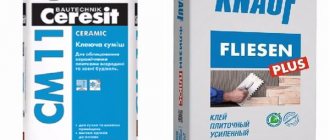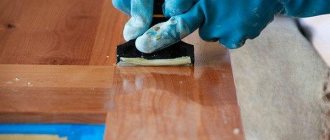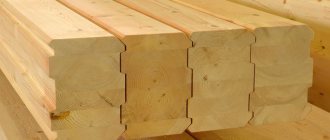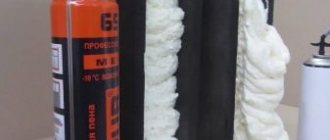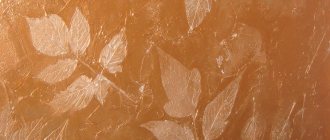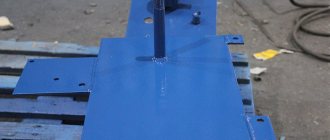When working with wood and many other porous surfaces, one of the most commonly used materials is drying oil. We apply it as a primer or for other reasons. But those of you who have come across this product at least a few times know that it has a long drying time, and that work cannot be continued until this drying is complete.
Types of compositions
As already mentioned, many different compositions are now produced, collectively called drying oil. Experts identify several main areas. In particular, these are natural, semi-natural, combined, alkyd and synthetic compositions.
Natural based compositions
The name speaks for itself. Drying, sometimes semi-drying vegetable oils are taken as the basis here. In rare cases and in small quantities, solvents can be added here, but only on a natural basis.
The standard is GOST 7931-76.
- The composition based on linseed oil is deservedly considered classic and of the highest quality. This is a thick, light transparent liquid obtained by prolonged boiling and adding a drier.
The range of applications is quite wide:
- They can be used as a primer under wooden, metal or plastered surfaces.
- It is linen compositions that are used for the production of light oil-based thickly grated paints, grouts and putties. Putties and lubricating pastes are also made from them.
- Most often it is used for interior work. Flaxseed oil for exterior woodwork can theoretically be used, but this is not advisable, since its price is higher, plus there are targeted synthetic protective compounds.
Applying the composition with your own hands.
The speed of work completion directly depends on how long the drying oil dries on the tree. In this case, at a temperature not lower than 20ºС, the drying time does not exceed 24 hours.
Important: the drier is added to one degree or another to any such composition; in fact, it is a kind of hardener. But you need to add it without fanaticism, as a rule, no more than 3 - 5% goes per 1 liter
Otherwise, the dried film will peel off.
Composition based on hemp oil.
- Compositions based on hemp oil have a slightly lower cost. They are darker in color. Therefore, they are used to prepare dark paints and putties. In other characteristics, they are practically no different from linen.
- Compositions containing sunflower oil are characterized by longer drying times. Even after a day, the surface will be slightly sticky. But this coating is considered more elastic, but its strength and water resistance are significantly inferior to flax and hemp counterparts.
Semi-natural drying oil oxol
The characteristics of this type of composition are reflected in GOST 190-78. As a percentage, it consists of 55% natural oils, 5% is occupied by the drier, and the remaining 40% belongs to the solvent. As a rule, white spirit is used as a solvent, but nefras can also be used.
There are brands "PV" and "B". They differ in that “B” is made exclusively from natural oils, and “PV” comes with petrochemical oils and polymer additives.
At a relatively low cost, the quality of this product is quite high. The use of drying oil for wood for outdoor work is completely justified here, since the solvent has a strong pungent odor.
Combined formulations
This is a fairly large assortment of compositions for which there is a GOST 19007. They are made by polymerization and complete dehydration of oils. They differ from oxoli in the ratio of fillers.
In particular, about 30% of the solvent is added here, using only white spirit. Combined compositions are often used to make paints and putties.
Wood putty on drying oil.
Important: when making paints with your own hands, you should take into account the labeling of the combined drying oil. It is designated by the letter “K” and a numerical coefficient from 2 to 12
So, even coefficients are used mainly for interior work. And the odd ones go to finishing external surfaces.
Alkyd and synthetic compounds
Alkyd varnishes are based on alkyd resins and polymer additives. In addition, modified oils and various types of solvents are actively used. No more than 30% of natural oils go here.
Composite or synthetic compositions are not much different from alkyd ones. They consist entirely of synthetic polymers and solvents extracted from coal, oil and chemical waste. They cannot be called very high quality, so they are used more for external work, but the price speaks in their favor.
Compositions and areas of application.
Important: for any type of composition, the consumption of drying oil per 1 m2 of wood does not differ much from the consumption of oil paints. The instructions say 110 – 130g
But from experience we can say that on fresh wood it can take up to 200 - 250g, depending on the hardness and porosity of the material.
Types and brands of oil drying oils
Oil formulations are produced through filtration and special heat treatment from vegetable oils.
Drying agents are added to the resulting composition in small quantities. They can be salts of various metals, for example, manganese, iron, lithium, zirconium, cobalt and others. If the drying agent contains compounds of several metals, then the drying oil drying rate increases significantly.
In oil drying oils the content of driers is insignificant, since with their excess the coating very quickly darkens and becomes brittle, i.e. begins to collapse.
Divided into:
natural. GOST 7931-76, natural drying oil (we carefully study its technical characteristics before purchasing), consists of plant oils (flax or sunflower). It contains up to 97% of these oils. The remaining 3% is occupied by the drier. It is divided into polymerized and oxidized (oxidized). Oxidized drying oils have a slightly darker color than polymerized ones, and surfaces coated with them age faster. It has a black-brownish color. It is an opaque liquid with a thick oily consistency and a slight odor. It is used for preparing thickly rubbed paints, as well as for impregnating all wood products inside buildings;
drying oil oxol, its GOST 190 78 (technical characteristics are indicated on the label) - this drying oil differs from natural drying oil in that it contains a solvent such as white spirit. The oxol contains 55% oil, 5% drier, and the rest is white spirit. It has a very strong and unpleasant odor, which is given to it by the solvent. It remains on the treated surface for quite a long time. In appearance and in its properties, oxol is almost no different from natural drying oil, but is much cheaper. Oxol is produced in the PV and V grades. They differ in that “B” uses hemp or flax oil, and “PV” uses other oils, including petroleum-polymer resins (petroleum-polymer drying oil is a by-product of the petrochemical industry). When using the PV brand, you must wear gloves and a respirator. Drying oil grade B is not used for painting floors. Oxol can be used both inside and outside the building;
combined drying oil. It is obtained by mixing and oxidizing oils from various plants or differently processed, with the addition of a solvent or synthetic drying oils. Drying time is determined according to GOST 19007. Combined drying oil is used mainly for preparing paints, and not for diluting them. This type comes in several brands: K 2, K 4, K 3, K 5, K 12. Even numbers are used for indoor work, and odd numbers can also be used outside. For example, combined drying oil (grade K 3) consists of a small amount of drying agent, solvent (usually white spirit) and drying oils. It is transparent, yellowish in color. Complete drying occurs within 24 hours. It is recommended to use in small portions, as it quickly forms a film. It is used for preparing any oil paints and for impregnating wood parts, for mixing plaster. Combined drying oil (grade K 2) is slightly different in color from K 3, it is slightly darker. It is used in the same way as K 3, but for interior work.
They are based on synthetic substances, such as by-products from the processing of shale, oil, gas and other substances with the addition of the necessary components. There is no GOST for them; instead, TU is used.
Alkyd drying oils are used as a base for the preparation of paints. They are cheaper than oil ones, which is often the decisive factor in their favor. Composite drying oils are rarely used in the production of varnishes and paints, since the resulting coating is of low quality. Due to some toxicity and a pungent odor, they are used outdoors.
Synthetic drying oils differ from natural ones in their long drying time and have no color. But be careful when purchasing such a composition: there may be surprises. If there is even a small amount of fus (vegetable oil sediment), then the drying time of the paint of which it is a component can take years. Moreover, such paint may not dry at all. The presence of fuse can be determined by its characteristic reddish color and the presence of a dark sediment.
Safety precautions when drying paint on different surfaces
To speed up the drying of painted products and surfaces, auxiliary devices are often used. One such device is a hair dryer. However, it can only be used at work if safety regulations are followed:
- Only surfaces with a porous structure are dried with a hairdryer;
- Do not dry freshly painted areas; at least 20 minutes must pass from the moment the composition is applied;
- before turning on the hairdryer, you need to make sure that the paint has adhered well to the surface and has been absorbed;
- Do not use a hair dryer to dry a smooth surface, otherwise the paint will begin to peel off;
- The tool must be kept at a distance of 30 cm from the painted surface;
- It is recommended to use a hairdryer when applying compositions of different shades so that the paints dry quickly under a stream of warm air - this will avoid blurring the boundaries of different colors.
Use of semi-natural, combined and synthetic
Semi-natural products that have a light brown color are distinguished by a fairly high degree of hardness, strength, water resistance and have a good shine. Used as an impregnating agent or for priming various wooden surfaces (except floor coverings). Semi-natural compositions are used in conjunction with other paints and varnishes.
Combined products are produced with the introduction of various modifiers that improve their impregnation properties, which are necessary for the production and dilution of various thick paints. Used for priming various wooden products before their subsequent painting or plastering.
Since natural wooden surfaces impregnated with drying oil take at least 24 hours to dry, paint or plaster should not be applied until they are completely dry.
How to saturate wood with drying oil - step-by-step diagram
Step 1: Surface Preparation
Wooden surfaces should be degreased, cleaned and thoroughly wiped off dust. The surface must be dry.
Step 2: Application and impregnation
For application, you can use either a brush with long bristles, a roller, a paint sprayer or a rag made of natural fabric. The main thing is that as much liquid as possible gets onto the surface being treated. Give it time to absorb and then apply another layer. The procedure can be repeated until the surface is able to absorb. Impregnation of wood with drying oil in one fell swoop is possible using a polyethylene bag. Take a regular bag (the main thing is that it’s whole) and pour a little liquid into it. Then place the product there, wrap the bag and seal the edges with tape. It takes several hours for complete impregnation.
Step 3: Drying
It is advisable to place the surface to be treated in a warm and dry place without drafts. There is no need to additionally heat or perform other manipulations. Well-impregnated wood dries for at least a day. Often, after work, some amount of the composition remains, as well as the tools with which you applied the drying oil to the surface being treated.
Please note that the material is flammable; a container with liquid may even explode. A cloth or brush soaked in drying oil is even prone to spontaneous combustion
Therefore, tools and the drying oil itself should be stored away from electrical appliances and fire sources. As a rule, the impregnation does not lose its quality throughout the year from the date of release.
- 5
- 4
- 3
- 2
- 1
What is drying – we saturate the wood
It should be noted that drying oil is in demand among lovers of natural materials that are absolutely safe for human health. However, in other respects (strength, penetration depth, durability), compositions based on natural oils have long been inferior to impregnations based on alkyd resins with fungicides and other modifiers.
Natural impregnation is most often used in the care of wooden products, which periodically, one way or another, need cleaning and sanding. For example, these could be carpentry tools. Drying oils made from natural oils also perform well in interior work - treated wooden surfaces look very good, continue to breathe and scent the air. But for outdoor work it is better to use more modern substances that are resistant to temperature changes, moisture and pests.
The process of breeding on drying oil
Serebryanka has a number of undeniable advantages:
- lies on the base in an even layer;
- it is resistant to mechanical damage and high temperatures;
- dries quickly;
- has a long shelf life and operation;
- has a wide scope of application;
- non-toxic;
- has a creative design.
However, despite the impressive list of advantages, this paint has a number of disadvantages:
- the mixture in dry form is explosive;
- the paint is not intended for application to alkyd or oil bases, since in reaction with them it bubbles and does not adhere well;
- it is not used for painting galvanized coatings, since such compositions are also susceptible to rust.
The process of diluting silver with drying oil is divided into three stages:
1. Preparation. Before proceeding with the procedure, you need to prepare the necessary tools and devices. For these purposes you will need rubber gloves, an unnecessary jar and a brush. In addition, you need to prepare drying oil, which you will directly use to dilute the silverfish in the required proportion. Drying oil must withstand temperatures up to 350 degrees.
2. Making the mixture. When mixing the ingredients, the paint should not be thick enough. If the density is higher than normal, white spirit or another solvent should be used.
Proportions
How to properly dilute silver linseed oil? In order for the composition to be stable and lay evenly on the surface, certain proportions must be observed. As mentioned earlier, the dilution ratio depends on the type of silverfish:
- pap1 – Take one part of powder for five parts of drying oil;
- dad2 – Take one part of powder for three or four parts of varnish.
The mixture is mixed well and a solvent is added at the end of the procedure.
Breeding Features
In addition to the listed nuances of diluting silver linseed oil, there are some features of this procedure:
- Synthetic varnishes are more suitable for diluting paint, but you need to work with them in an open, well-ventilated area.
- If you want to make a heat-resistant composition, then KO185 varnish is more suitable for such purposes. This paint is excellent for covering fireplaces and is diluted in a ratio of two to five (five varnishes, two powders).
- After mixing these components, the solution will still be quite thick. In order to correct the situation, white spirit, solvent, turpentine, toluene or other solvent mixtures are used.
- If the work is carried out with a brush or roller, then the proportions of paint and solvent are taken in a ratio of ½ to 1. If a spray gun is used, then the dissolution should be one to one.
- You need to stir the solution until it becomes homogeneous and small lumps are eliminated. On average, this process takes about ten minutes.
The process of diluting silver powder with drying oil is not particularly complicated. The main thing in this procedure is strict adherence to proportions and sequence of actions. Otherwise, the paint will lose its properties, will apply unevenly and will last much less.
It is also important in the process to ensure protection from contact of the composition with the skin and mucous membranes. Gloves and goggles are used for these purposes.
It is better to carry out work in the fresh air, which will protect you from inhaling harmful vapors of drying oil and solvent.
By silver we mean aluminum powder. When applied to a surface, it creates a beautiful layer of metallic color, reminiscent of the shine of steel. This product can be sold in dry, paste form; it is intended for making paint
It is important to know how to dilute silver for painting metal, and how to do it correctly
Lecture 4 Drying oils
How can you dry it faster? Is there a way to fit it into the day? If not, is it possible to dry it outside (currently the temperature is about 0)?
I wouldn’t like to upset you, but there is very little chance that the drying oil will dry out.
If there is a strong and unpleasant smell, then it is most likely Ansol drying oil, it is not even drying oil, but its artificial substitute, there is no vegetable oil in its composition at all, only petroleum products.
True, “Ansol” dries very quickly, a day maximum, which means you have two in one and the drying oil is not drying oil, and even stitched.
The first option is to try drying it with a hair dryer (a regular one won’t work), direct the stream of hot air as if casually, so that the flow of hot air seems to “fit” your barrel.
If nothing helps, then there are no options to dry it at all; the drying oil just needs to be removed from the surface.
Drying oil can be removed with gasoline, White Spirit, or even better, Solvent, a solvent for oil paints.
The procedure is not complicated, moisten a large rag with the products that I listed above (one of them, of course), then take a break for about forty minutes, then repeat the procedure, thus very quickly removing the drying oil from the barrel (You are writing about a whole day of work, that’s enough here several hours).
Drying oil has a short drying time, regardless of what it is made with. Usually it is 24-30 hours after application to the surface, after drying it shines and becomes glossy, the temperature required is 20 degrees Celsius.
If the drying oil is expired
, it has an unpleasant pungent odor, when applied it is sticky, viscous, and does not dry.
Your metal barrel dries for a week at a temperature of 15 degrees, and it stinks strongly, therefore the drying oil was old, there is no point in waiting for it to dry, the surface will only become more and more sticky, the smell does not disappear even after a long period of time.
More questions on your topic:
leave a comment
Builder's Dictionary:: Repair questions:: Calculators:: Special equipment:: Miscellaneous
2006 - 2021 © user agreement:: contact with the site administration
How to cover with drying oil?
The procedure for surface treatment with drying oil is as follows:
cleaning the surface from dust, dirt and grease
Dry well; surface grinding; it is important to saturate the solution with oxygen (stir); add a coloring pigment to the drying oil (if necessary); apply the first layer; if wood fibers appear, lightly sand the surface; cover with additional layers of drying oil; dry - it usually takes about a day for drying oil to dry at a temperature of 20-22 degrees. You can apply drying oil to wood with ordinary paint brushes (Painting work, types of brushes) or a roller (Paint roller, types of rollers)
Drying oil can be applied to wood using regular paint brushes (Painting work, types of brushes) or a roller (Paint roller, types of rollers).
What is drying oil needed for?
It is also important to note that when working with drying oil, you must follow some rules:
carry out work only in a well-ventilated area; there should be no sources of open fire nearby - drying oil is prone to fire and even explosion; if necessary, if the drying oil is very thick, you need to dilute the composition with castor oil, white spirit or other approved solutions (in proportions of 1:10 - where for 10 parts of drying oil there is 1 part of solvent); apply the composition only with rubber gloves and preferably in a protective suit, since if the solution gets on the skin, a chemical burn may occur; when purchasing, you should pay attention to the manufacturer and cost of drying oil, as well as the composition, and related documents (if any); When choosing, it is better to give preference to a solution in transparent containers, since sediment will be visible in such containers. If there is sediment, then the drying oil is not of very good quality; if you plan to use drying oil to putty cracks in wood, it is recommended to add sawdust to the solution; It is not recommended to use drying oil that is stored for more than 12 months; after completion of work, it is necessary to ventilate the room; It is recommended to treat expensive types of wood with natural drying oil; It is not recommended to use heaters and fans to speed up drying, as this can lead to cracking of the coating.
Features and rules of use
This composition belongs to the category of quick-drying and quick-hardening substances, and therefore requires compliance with certain recommendations when working with it:
the mixture is sold in a ready-to-use form, but before using it directly, it is recommended to thoroughly mix the drying oil so that the active ingredients are evenly distributed throughout the liquid; impregnation can only be carried out on dry, clean and pre-degreased surfaces; it is necessary to apply the solution in a fairly thin layer, using a wide brush or small roller; the air temperature during work should not be below 15 and above 20 degrees, and humidity - no more than 75%; each layer of drying oil dries for about a day, so each new application should be carried out no later than 24 hours; It is very important, upon completion of work, to remove from the room all tools and materials that came into contact with drying oil;
- unused mixture can be stored for no more than 12 months in a hermetically sealed container;
- During work, it is recommended to use a respirator or protective mask and rubber gloves;
- if the composition gets on the skin or eyes, it must be thoroughly washed off with plenty of water;
- when carrying out work indoors, it is imperative to ensure access to fresh air;
- drying oil "Oxol" is highly flammable, so it should be used as far as possible from open sources of fire;
- when purchasing this product, you should definitely ask the seller for certificates of quality, safety and compliance with GOST requirements;
- This composition can also be used for sealing small cracks. To do this, drying oil is mixed with sawdust in equal proportions and applied to the surface to be treated using a spatula.
Following these simple rules and recommendations for using drying oil will allow you to process wooden and putty surfaces as simply, quickly and correctly as possible, and will also ensure a positive result.
How to tell if drying oil is completely dry and what to do if it doesn’t dry
The main sign that this material is completely dry is the absence of stickiness. However, in some cases, drying oil does not dry out even after 10 days. Most likely the reason is marriage. There is no point in waiting for such drying oil to dry out - it is better to clean it from the surface. One way to do this is with white spirit. However, if the material is deeply embedded in the wood, a plane may be required.
Wood is the most popular and environmentally friendly material in construction. And to preserve all its properties, it is treated with drying oil. Craftsmen who have encountered this substance know very well how long it takes to dry on wood, and that this process lasts quite a long time. However, until the surface is dry, further work cannot be continued. After drying, the drying oil creates a protective thin layer.
Why is drying oil needed and where is it used?
First of all, it is a paint and varnish material that is obtained from superheated vegetable oil. Various components are also added to the solution, such as solvent and alkyd resins, which are the main components.
The main function is to create a protective film on the surface that protects the material from mold, insects, mildew and dirt. Drying oil is also used for priming. With it, the paint is applied more evenly and economically.
You should also know that a surface covered with drying oil looks very beautiful. Therefore, it can also be used to improve appearance.
What types of drying oil are there?
The drying time of the composition on wood or wood-based particle material differs, since different types of solutions dry differently. Also, all types are designed for different purposes. And before use, it is imperative to determine for what work it is needed. There are four types:
1. natural. Compared to other types, they are not flammable, since they do not contain flammable impurities. The hardening time will depend on the type of oil. It will take about a day for flax-based material to dry, but sunflower oil-based material will not have time to dry in that amount of time;
2. semi-natural. Half are made of flammable materials. They can be used not only to coat wood, but also to thin out paint. Its drying time will be approximately a day;
3. artificial. They are the cheapest. They are made from shale oil and then dissolved in an acidic substance. This type of solution is not used to protect wood or metal material. It must not be used indoors. Mainly diluted with plaster, concrete and mastic. Dries in more than a day;
4. mixed. They dry in no more than a day. They are made by dehydrating oils, and are used purely for the manufacture of paints.
How to dry drying oil faster on wood or chipboard?
Compared to paint, which hardens after the solvent evaporates, drying oil takes much longer to dry. Drying occurs as a result of the interaction of the substance with oxygen and oxidation.
Many people are interested in the question: how to dry drying oil as quickly as possible? But speeding up the process is not so easy, and there are only a few methods. These methods include the use of a heat gun, which reduces humidity and increases temperature. Also, applying a hot composition can increase the hardening process, but this method has not been used for a long time. You can also use a drying agent designed specifically for drying varnish materials. But before doing this, you should carefully read the instructions.
How to determine complete drying?
The main factor indicating 100% drying is the absence of stickiness. But there are cases when hardening does not occur even after ten days, and the main reason is the low quality of the coloring matter. In this case, it is not recommended to wait for complete drying. It is better to clean the surface and apply a new layer.
To remove a defective solution, you can use a solvent, but if the drying oil is absorbed deeply into the wood, then it will have to be removed with a plane.
Why apply hot drying oil?
If you treat wood with a heated mixture, this will significantly increase its durability. After which the material can be coated with varnish or enamel. It is not recommended to apply water-based paint, as it will not adhere well. This applies to all substances made from water.
It is no secret that wooden surfaces treated with varnish or paint have a significant disadvantage - they become cold and lifeless.
If you intend to preserve the beauty of texture, warmth and energy, we recommend that you pay attention to such a material for wood processing as drying oil
How to do it yourself?
If you don’t have the opportunity to go to a hardware or hardware store, but have a lot of vegetable oil accumulated at home, then it’s quite possible to make drying oil with your own hands. Most often at home, flaxseed and sunflower oils are used.
To make homemade impregnation based on flax composition you will need:
- metal container (basin or bucket, pan or ladle);
- heat source (gas or electric stove);
- rosin;
- potassium permanganate;
- personal protective equipment (respirator and rubber gloves).
The technology for making drying oil is simple: first, the oil is poured into a vessel and gradually brought to a boil - this occurs at a temperature of 110 degrees. At this moment, the oil begins to release the water it contains, it begins to evaporate and bubbles form on the surface. In this way, the oil is boiled for about 4 hours.
It is important that the temperature of the liquid does not exceed 160 degrees
After evaporation is complete, a desiccant is introduced into the thickened drying oil in a ratio of 30 g of the substance per liter of oil. The moment this component is added, strong foaming begins, which can lead to injuries and burns. To prevent this from happening, the desiccant is introduced gradually in small portions, after which the heat exposure is increased to 200 degrees and the composition continues to be cooked for another 3-5 hours.
As the main drier, a mixture of rosin and potassium permanganate is used in a ratio of 20 to 1, and first the rosin is brought to melting, and only then permanganate is added to it.
Drying oil made from sunflower oil also reliably protects wood or plywood, like flax-based liquid, the only difference is the finishing shade - drying oil made from sunflower oil will give a lighter tone.
Whatever method of self-preparing drying oil is chosen, the main principle remains the need to remove all water from the oil and achieve the oxidation of all kinds of impurities. This can only be achieved through long-term heat treatment, so you need to be patient and have protective equipment and take care to comply with fire safety rules and good ventilation.
Drying oil drying time on different materials
Drying oil is created from vegetable oil, which is heated and oxidized using a special method. Next, various additional elements are added to improve the characteristics of the product. These can be solvents, driers and other components.
For wood, the material is used to create a protective film that helps avoid the harmful effects of insects, as well as moisture. This coating of a wooden surface helps to avoid the formation of mold and various types of fungi on it, and to avoid the process of rotting.
It is also used as a primer impregnation; after such treatment, the coloring of the wood will be better, the paint will lie evenly, and the appearance will be more pleasant. It can highlight the natural grain of wood, which is why many choose the product as a finishing coating.
However, its ability to dry for a long time stops many from using it; drying oil drying time depends on several factors: temperature, painting conditions, type of composition.
For wood, the material is used to create a protective film that helps avoid the harmful effects of insects, as well as moisture.
Tree
Before answering the question of how long it takes drying oil to dry on wood, you need to understand the types of products. After all, they dry in different ways; the components contained in the solution directly affect this process.
There are 4 types of drying oil:
- Natural;
- Semi-natural;
- Synthetic;
- Combined.
Natural does not contain solvents, can be made from different types of oils, and is fireproof. The time required for drying varies depending on the type of oil. Flax and hemp drying oils will have time to dry in a day; sunflower oils will take longer than 24 hours to dry.
Semi-natural are produced with the addition of solvents (45%), used to coat trees, and added to paint and varnish products. But they are not allowed to cover wooden floors in a house or apartment; the drying period is also 24 hours.
Combined for wood is not used.
Natural does not contain solvents, can be made from different types of oils, and is fireproof.
Plywood
Plywood should be treated with drying oil on all sides, the ends should also be coated with the compound, and it is advisable to apply at least two layers. You need to work with heated drying oil; to do this, place it in a water bath. The drying stage is affected by room temperature and humidity; the higher the degrees and the lower the % humidity, the faster it will happen. The thickness and type of plywood will also affect this process.
Plywood should be treated with drying oil on all sides, the ends should also be coated with the compound, and it is advisable to apply at least two layers.
Chipboard
The drying time of drying oil for wooden objects (fibreboard, chipboard), just as on any type of wood, depends on the type of drying oil used. The time required to dry the material depending on the composition of the product was described above.
Climatic conditions when work is carried out outdoors have a special impact on the drying of surfaces. In summer, products will dry faster when compared with the same process in winter, when temperatures drop lower and lower. In autumn, due to the increased humidity during the rainy period, it will also be necessary to wait longer.
Climatic conditions when work is carried out outdoors have a special impact on the drying of surfaces.
Metal
Coating of metal and concrete is often done with a synthetic type of drying oil. It helps protect these materials from rust and is used as a primer solution. It takes more than a day for the surfaces to dry.
Coating of metal and concrete is often done with a synthetic type of drying oil.
Oxol
Drying oil oxol is obtained by highly diluting vegetable oils; this combination of substances must comply with GOST 190-78. The composition must contain 55% natural ingredients, to which a solvent and a drier are added. Oxol, like combined drying oil, is not advisable to use indoors - solvents emit a strong unpleasant odor, sometimes remaining even after hardening.
The advantage of this mixture is its affordable price.
Using the composition, you can dilute oil-based paints and varnishes, since the material’s own protective properties are not enough in practice. Among the various types of oxol, it is best to use compositions based on linseed oil, which form a more durable film and dry faster.
Oxol is divided into several types. Thus, material marked with the letter B can only be used for outdoor work. The PV composition is needed when you need to prepare putty.
In the first case, to produce the mixture you need linseed and hemp oil. Category B oxol can be used to obtain oil-based paint or dilute thickly rubbed paint. Such mixtures cannot be used in floor finishing.
Drying oil oxol brand PV is always made from technical camelina and grape oils. It also contains vegetable oils that cannot be used in food directly or through processing: safflower, soybean and unrefined corn. The raw material should not contain more than 0.3% phosphorus compounds, there should be even less depending on the calculation method. Opening metal packaging is permitted only with tools that do not produce sparks upon impact. It is prohibited to light an open fire where drying oil is stored and used; all lighting fixtures must be installed in an explosion-proof manner.
Drying oil oxol can only be used:
- on open air;
- in intensively ventilated areas;
- in rooms equipped with supply and exhaust ventilation means.
Alkyd drying oil
The alkyd variety of drying oil is at the same time very cheap, extremely durable and mechanically resistant. Such mixtures are needed where there is constant heavy rainfall, temperature changes and solar radiation. For at least several years, the surface of outdoor wood structures will remain in excellent condition. But alkyd compounds are allowed only as a means of pre-treatment; in their stand-alone form they are not effective enough. It is not advisable to use them indoors due to the strong unpleasant odor.
Alkyd drying oil should be applied to wooden surfaces with paint brushes, and they should be cleaned in advance and kept dry. Approximately 24 hours after the first layer, the next one should be applied, at a temperature of 16 degrees or more.
Drying oil based on alkyd resins is divided into three main groups:
- pentaphthalic;
- glyphthalic;
- xyphthalic.
Mostly such materials are supplied in transparent containers, and occasionally in barrels. Approximately 20 hours after impregnation, you can cover the wood with a layer of paint.
Drying oil colors are determined using the iodometric scale method
, like many other paints and varnishes. The color is influenced by the tone of hydroxycarboxylic acids and the type of vegetable oils used. The lightest tones can be achieved by using dehydrated castor oil. Where electric current flows, dark areas are formed, they can also be caused by strong heating and the appearance of significant volumes of sludge.
As for the expiration date, the current state standards do not directly stipulate it.
The longest storage time for drying oil is 2 years (only in rooms maximally protected from negative external factors), and for 2 - 3 days you can leave it in an open place. Towards the end of its shelf life, the material can be used, if not for protective purposes, then as a means for ignition.
Polymer
Polymer drying oil is a synthetic product obtained by the polymerization of petroleum products and diluted with a solvent. The smell of such material is very strong and unpleasant; under the influence of ultraviolet radiation, rapid decay occurs. Polymer drying oils dry quickly and give a strong film with a glossy sheen, but joinery products are poorly saturated with them. Since the formulation does not include any oils, the rate of pigment settling is very high.
It is advisable to use polymer drying oils when diluting oil paint
dark colors, intended for minor painting work; It is necessary to intensively ventilate the room.
Combined
Combined drying oils differ little from partially natural ones, but they contain 70% oils, and approximately 30% of the mass is solvents. To obtain these substances, you need to polymerize drying or semi-drying oil and free it from water. The key area of use is the production of thickly rubbed paint; complete drying occurs in a maximum of 24 hours. The concentration of non-volatile substances is at least 50%.
The use of combined drying oils sometimes gives better results
than the use of oxol, especially in terms of strength, service life, water resistance and weather resistance. The risk of thickening during long-term storage due to chemical reactions between free fatty acids and mineral pigments must be taken into account.
Synthetic
All synthetic drying oils are obtained by refining oil; GOST has not been developed for their production, there are only a number of technical conditions. The color is usually lighter than that of natural compositions, and transparency also increases. Shale drying oils and ethinol give off a strong unpleasant odor and take a very long time to dry. Shale material is obtained by oxidizing the oil of the same name in xylene. It is used mainly for dark tinting and diluting paint to the desired consistency.
It is unacceptable to use synthetic impregnations for floorboards and other household items. Ethanol is lighter in color than shale material and is produced using waste from the production of chloroprene rubber. The film created is very strong, dries quickly and is shiny in appearance, it effectively resists alkalis and acids. But its level of weather resistance is not high enough.
Compositional
Composite drying oil is not just lighter than natural or oxol, but sometimes has a reddish tint. The cost of the material is always one of the lowest. But it is used only in extremely rare cases; paint and varnish production has not used such a substance for a long time.
Consumption
To ensure minimal material consumption per 1 m2, you need to choose oxol, especially since all combinations of this series dry faster than the natural mixture. Flaxseed oil is consumed at 0.08 - 0.1 kg per 1 sq. m, that is, 1 liter can be placed on 10 - 12 square meters. m. Consumption by weight for plywood and concrete for each type of drying oil in a particular case is strictly individual. It is necessary to find out the relevant data in the instructions from the manufacturer and in the accompanying materials.
Drying time is reduced when choosing solutions with the addition of polymetallic driers. Natural linen material will dry in 20 hours when mixed with lead, and if manganese is added, this period will be reduced to 12 hours. By consuming a combination of both metals, the wait can be reduced to 8 hours. Even with the same type of drier, the actual temperature is of great importance.
It is no secret that wooden surfaces treated with varnish or paint have a significant disadvantage - they become cold and lifeless. If you intend to preserve the beauty of texture, warmth and energy, we recommend that you pay attention to such a material for wood processing as drying oil.
Surface treatment
Before sanding, the surface should be prepared. To do this, the wood needs to be degreased and dirt and dust removed. The material being processed must be dry.
Application
You can apply impregnation using several types of tools to choose from:
- brushes with long bristles;
- roller;
- spray bottle;
- rags made of natural fabric.
Below are several ways to saturate wood with drying oil:
- Hot impregnation. Impregnation is carried out in a water bath. The method is especially good for processing small products. We put the material in a vessel with a hot solution, holding it there for 4-8 hours, and then dry it for 4-5 days. Helpful advice: if you add (2-3% of the total volume) to the composition, the surface will dry much faster - in 2-3 days.
- Drying oil with kerosene. To create the mixture, we take the indicated components in a ratio of 1 to 1. It is acceptable to use both hot and cold solutions. However, the temperature of the drying oil affects the length of time the wood needs to be cured. If we are talking about the hot method, it will take only 3 hours, but the cold version will require 1-2 days. Drying time for the coating is 2-3 days.
- Drying oil, paraffin and turpentine. Mix 5 parts of drying oil, 1 part of turpentine and 8 parts of paraffin. Moreover, first we dissolve the paraffin in turpentine, for which we use a water bath. Next, add the required amount of drying oil and mix the mixture thoroughly. Apply the hot composition to the wood and wait until it dries completely (this will take 2-3 days).
- Drying oil with wax. For 20 parts of the base material we take 3 parts of wax, which we first grind. The surface will dry in 2-3 days.
- Soaking using a plastic bag. Take an undamaged bag and pour a little liquid into it. Next, place the wooden piece in the bag. We wrap the product by sealing the hole with tape. Soaking will take several hours.
During impregnation, you need to apply a sufficient amount of drying oil to the surface. The liquid should saturate the wood well. When the coating dries, apply a second layer. If necessary, the procedure can be repeated until the tree stops absorbing the solution.
Drying
The speed of drying depends on several factors, the main of which are the content of the drying agent, temperature and humidity, as well as the type and quality of drying oil.
Impregnations with polymetallic driers dry the fastest. For example, natural linseed oil with the addition of lead or manganese drier dries in 20 hours and 12 hours, respectively. However, it is worth using both of these metals, and the drying speed will not exceed 8 hours.
Air temperature and humidity have a direct impact on drying time. For example, it will take 50% less time to dry impregnation with cobalt drier if the air temperature is at least 25 degrees above zero. The surface treated with a composition containing manganese drier dries even faster (at least 2-3 times). Favorable air humidity is also important; this figure should not exceed 70%.
After processing, the wooden part should be placed in a dry and warm place. There should be no drafts in the room. There is no need to specifically heat the surface; such actions can only cause harm.
Drying the surface after impregnation
How long the drying oil dries depends on the amount of drying agent, temperature and humidity, as well as the type and quality of the impregnation itself.
It has been noticed that solutions with polymetallic driers dry much faster. Natural drying oil made from flax dries in 20 hours when adding lead and 12 hours when adding manganese. If you add a mixture of these metals as a drier, the drying time will be reduced to 8 hours.
Temperature and humidity are very important for drying speed. Drying drying oil with cobalt drying agent will require 2 times less time, and with manganese drying agent - 2-3 times, if the thermometer shows more than +25ºС. The drying speed will decrease significantly if the indoor air humidity is 70% or more.
Surface treatment
Drying oil for wood is an excellent impregnating agent. However, you must adhere to the rules for applying the mixture. This is a necessary condition for high-quality and durable repairs.
Surface treatment is carried out according to the following steps.
- Cleaning coatings and products from dust, dirt, leveling the surface and degreasing it.
Attention! After treatment with degreasing solutions, the wood should dry thoroughly.
- Apply generous amounts of drying oil to the wood using soft bristle brushes, a roller, or a spray bottle. When the composition is absorbed, apply the next layer. Small items can be placed in a container with drying oil for some time for maximum impregnation.
- Providing optimal conditions for polymerization of the substance indoors so that the mixture dries. Sometimes after the repair is made, the layer does not dry. The question arises: what to do? It is necessary to exclude the influence of moisture and temperature fluctuations.
Description of the substance
Drying oils are a large range of impregnating agents that form a special film on any wooden surface. They are based on vegetable oils that have undergone special production processing. Basically, drying oils are made from sunflower, linseed, rapeseed or soybean oil with additional additives, which form a film that protects the wood from rot, mold, mildew, and parasitic insects.
Drying oils can be used as independent protection for wooden products, as a decorative dark coating, as a regular primer before finishing painting or filling untreated wooden surfaces, and as an additive for the preparation of various paint and varnish compositions.
Modern compositions are divided into several groups:
- Natural. Obtained by processing various vegetable oils. Such drying oils do not contain synthetic solvents. Thanks to driers, the wood dries much faster after application.
- Semi-natural. They are obtained as a result of long-term thermal processing of natural sunflower oil with the addition of white spirit or other solvents in a 1:1 ratio. They do not contain mineral oils or harmful substitutes. The composition includes quickly hardening driers, which allow the wood to dry completely after 24 hours.
- Combined. They are derivatives of a complex process of polymerization of natural oils and are used to produce various types of thick-based paints. Able to dry within one day.
- Synthetic. They are quite dark in color and have a pungent odor. They are obtained from petroleum products and coal, as well as waste from the production of synthetic rubber products. Such drying oils are not used indoors, since even after they have completely dried, a specific odor remains for a long time.
Advantages and disadvantages
Drying oil Oxol can be used not only for wood material; it is also perfect for other objects. This is due to its technical characteristics. There are a number of other advantages over other types of drying oil:
- provides the material with a shiny and hard protective layer;
- increased degree of water resistance;
- behaves well in adverse weather conditions;
- perfectly absorbed into any wood surface with varying degrees of porosity;
- increases the performance characteristics of wooden structures;
- does not collapse due to sudden fluctuations in ambient temperature;
- it is not affected by fungus and mold;
- when applied, the product levels the surface;
- dissolves well in oil paint, which allows you to increase the volume of the paint and varnish material;
- can be used as an impregnation.
In addition to its advantages, drying oil also has disadvantages:
- afraid of constant mechanical influences;
- has a sharp unpleasant odor, which strongly eats into the material and does not erode for a long time;
- highly flammable.
Protecting wood with hot natural drying oil
Treating the surface of wood with hot natural drying oil can significantly improve the durability of the wood. After this, the wood can be painted with alkyd or oil enamel. But water-based paint, on the contrary, will lie quite poorly. As for water-based stain, it should also not be applied over drying oil.
Why do you need drying oil for wood, if today there are a large number of other means for coating wooden surfaces? Drying oil is a traditional paint and varnish material that is widely used in construction and painting work. Since Soviet times, almost all wood has been treated only with this oily product due to its high qualities and low price.
Varieties of drying oils
There are several varieties of the product. The first type includes natural formulations containing oils of natural origin. Plus they are safe for human health. Hemp, flaxseed, and sunflower oils are used. The drying process takes at least a day. Other types:
- Semi-natural, a little more than half of the total mass uses sunflower oil (50-55%), white spirit and drier are also added. The downside is the pungent smell. Forms a dense film that protects the surface well from moisture and retains color brightness for a long time;
- Combined type, here more oil is added to the composition (70%), other elements are a diluent and siccatives. Most often used for diluting paint and varnish products;
- Alkyd. They contain little heat-treated oil; the other components are alkyd resin and driers. It smells strong and is inexpensive;
- Synthetic look. It is characterized by low cost, the composition uses products of oil refining and the coal industry, is produced in different colors, and has a pungent smell;
- Composite, due to toxicity, are only suitable for outdoor work.
Drying oil forms a dense film that protects the surface well from moisture and retains the brightness of the color for a long time.
